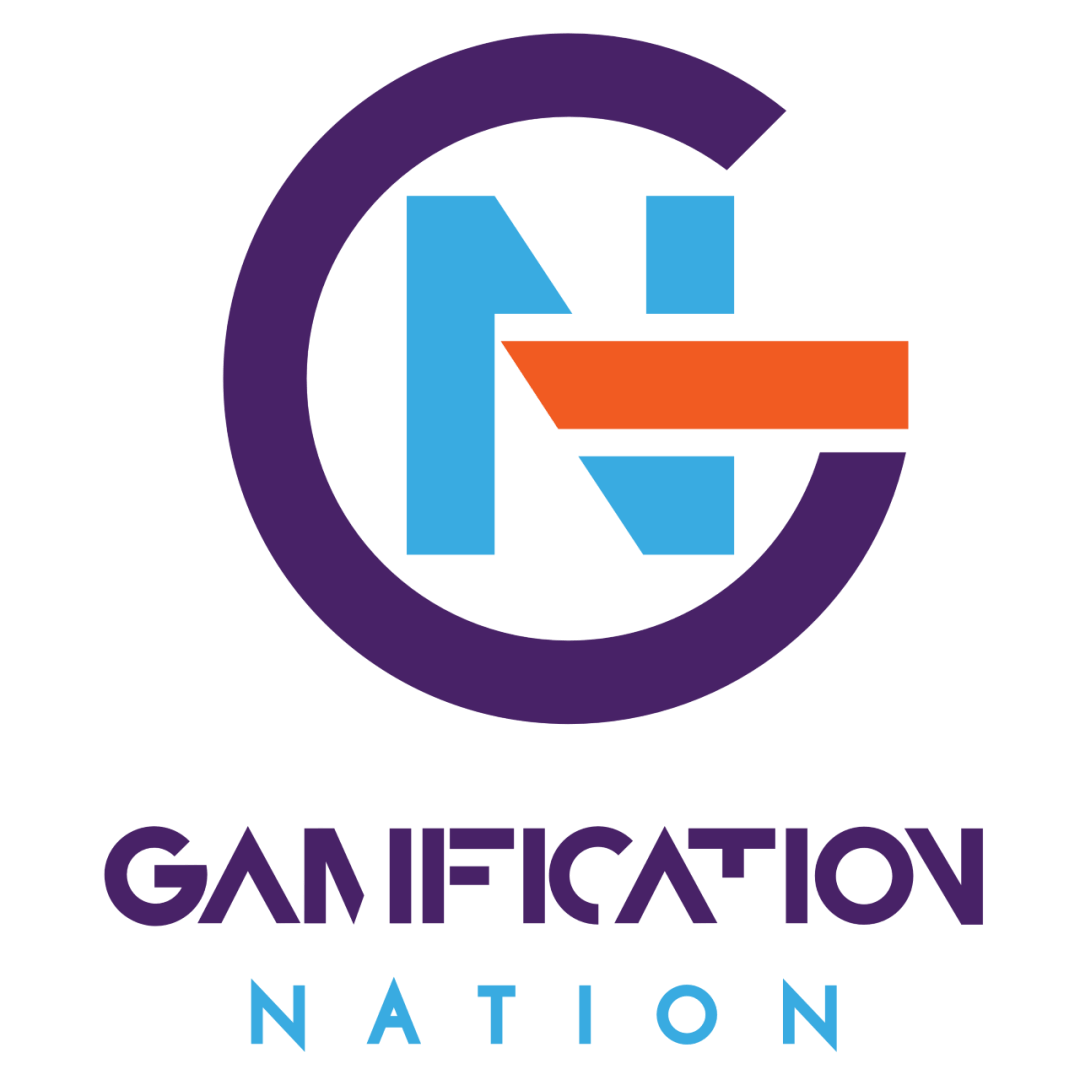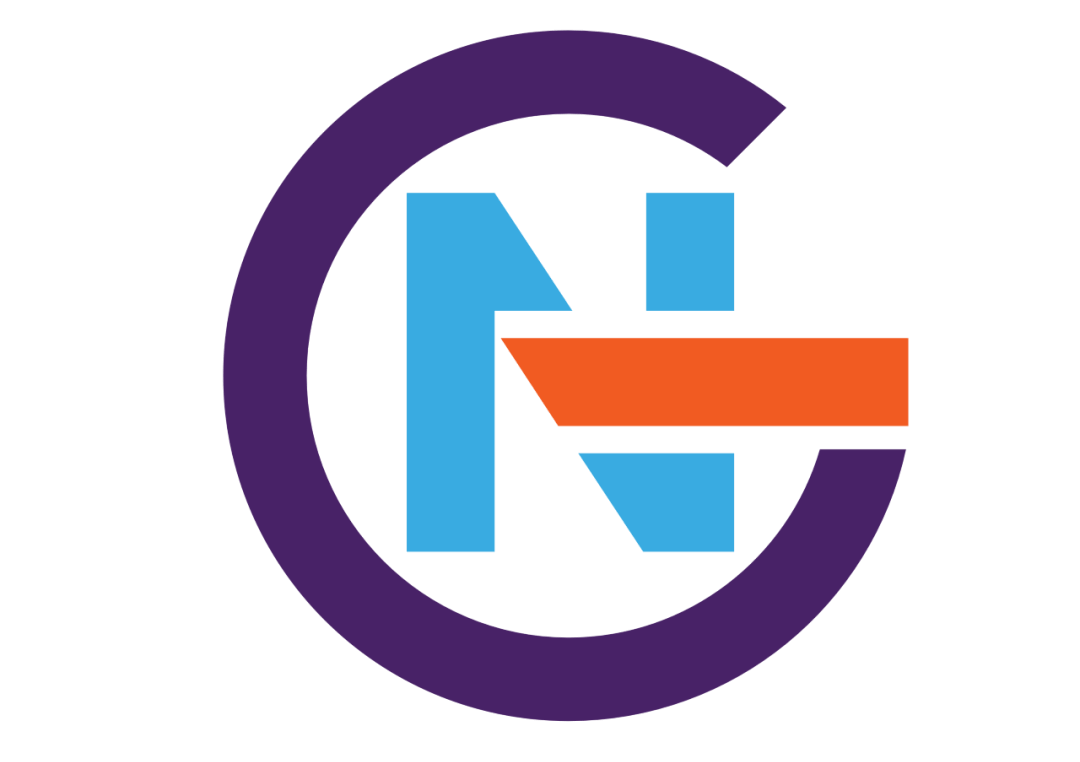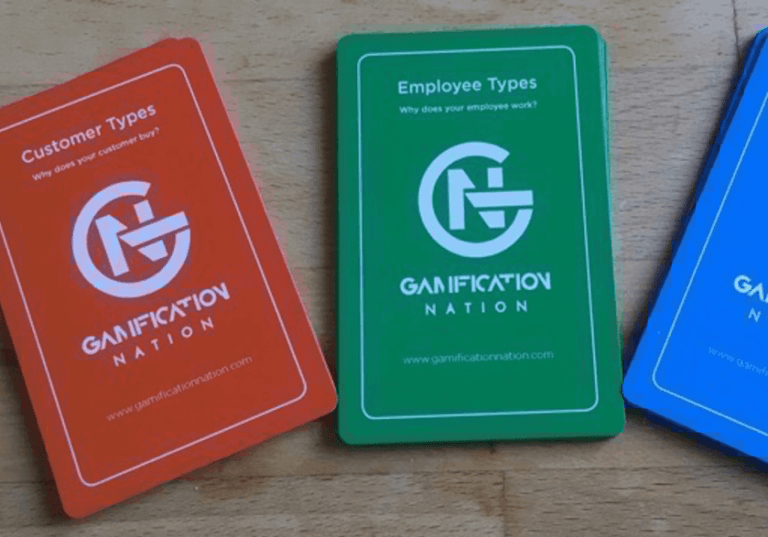With 2025 well and truly underway, I am finally in good health to write my perspective on what will drive gamification and technology in business in the coming year. If you are a long-time follower, then you know this is somewhat of an annual tradition since 2017 (hit the search bar for previous years). From what we have already experienced so far if we can remain war-free (trade and the other variety), then I believe these 10 trends below will be on point. However, if the contrary happens, then I am not sure which of them will hold strong, but gamification can work in cyber defense and defense in general, so I guess there is always an opportunity.
Technology is evolving at breakneck speed, bringing forth possibilities we could only dream of a few years ago. It’s clear that the upcoming trends will require us to have a keen understanding of both the technology and the human experience. We’ll be balancing between leveraging cutting-edge solutions and maintaining the integrity of motivational design that truly resonates with users.
Like last year, I will examine each trend and explore their impacts not only on marketing and customer engagement but also on HR, operations, and employee engagement. I will also decipher the implications for small businesses, ensuring that our journey remains insightful and relevant to businesses of all sizes.

Trend 1: AI-driven gamification design
Generative AI and AI automation is all the rage, in all parts of business, and I am not shy to say, we are experimenting a lot with tools and testing their limitations and advantages. In the quest to automate and innovate, AI-driven gamification design carries the risk of becoming trapped in a cycle of simplicity, favouring points, badges, and leaderboards. These elements, while effective in certain contexts, often overshadow more complex and engaging aspects of game design. AI’s tendency to rely heavily on these basic mechanics stems from it following what’s most documented in the field—those elements that are easiest to quantify. And in the early days of gamification, these were by far the most talked about and dare I say it also most frequently used game mechanics to varying degrees of success. Knowing that large language models, which power AI are built on knowledge found online, this should not come as a surprise. So if you intend to use AI for gamification design then unfortunately, this can lead to designs that lack depth, narrative, and the intrinsic motivation needed for lasting engagement.
To craft truly engaging gamified experiences, designers must balance AI’s capabilities with human creativity and insight. AI’s limitations are evident when narrative elements are absent. A good gamification strategy should involve a rich blend of storylines, feedback mechanisms, and diverse game mechanics all built around meaningful touchpoints, decision points, behavioural and motivational factors. Without these, experiences risk being predictable and uninspiring. AI needs guiding by expert hands that can introduce further complexity and nuance into the design process.
For marketers and those working within customer engagement, an over-reliance on AI-driven gamification design can mean losing touch with what makes an interaction meaningful. It becomes vital to ensure that while AI can automate and streamline processes, it doesn’t strip away the human element that makes these interactions unique. Effective gamification in marketing should be about innovation and connecting with consumers on a deeper level, beyond the superficial appeal of loyalty points or spin and win competitions.
From an HR and operations perspective, especially in large corporates, AI in gamification poses an interesting challenge. While AI can manage large volumes of data and provide detailed analytics, its inability to factor in the human nuances of employee interaction and motivation could hinder creating effective engagement strategies. HR departments need to ensure AI’s analytical power is matched with human insights that add depth to gamification strategies within employee engagement schemes. Getting to the root cause of motivation may be more rewarding and for that human interaction is in my view still essential.
For small businesses, there’s a temptation to lean heavily on AI-driven solutions due to resource constraints. However, small businesses should consider gamification’s richer elements, such as storytelling and personalised experiences, to differentiate their offerings. By doing so, they can overcome the constraints of purely data-driven AI models and create more meaningful and impactful customer engagements.
Trend 2: Knowledgeable customer demands
In contrast to the first trend, consumers have become more knowledgeable and want more targeted and inclusive gamification designs, which I find great to see. What still needs to catch up is that all this can be achieved on tiny budgets. Those looking for luxury car experiences on bicycle budgets, still exist. I think that despite AI being used to brainstorm ideas and get initial input, most customers and buyers of gamification design services quickly realise they need more for it to actually have a positive impact in attracting, motivating, nudging, and retaining customers or employees alike.
Customers now seek experiences that integrate seamlessly into their lives, offering value and fostering meaningful interactions. Gamification, when done well, can meet these expectations by providing unique, tailored experiences that go beyond superficial incentives. In my view, we have now reached the point where a customer wants you to take them into an experience, a journey, or a quest and let them feel how your brand or company will treat them before they commit for the longer term. It is about values and views of the world, their world, and how you as a brand fit into that in a fun manner.
Marketers must be adept at designing campaigns that harness the full potential of gamification, weaving in narrative elements and personalised experiences that encourage interaction and loyalty. By recognising these evolved expectations, organisations can better align their strategies with what consumers truly value. It is about knowing your customers in-depth and creating a game-play or gamified journey that helps them see your brand in another light.
For HR and operations in large environments, adapting to these shifts means prioritising engagement methods that treat employees not as mere participants in a scheme but as integral partners in the experience, co-creators. Gamification can and should be leveraged to improve job satisfaction and commitment by focusing on aligning with employees’ personal goals and values. It’s about creating an environment that respects and builds upon individual motivation, fostering a sense of ownership and partnership.
Small businesses can also capitalise on this trend by using gamification to enhance user experiences, offering something distinctive and tailored. By recognising and embracing the evolution of customer expectations, they can carve a niche by providing services that stand out in their ability to create meaningful and memorable interactions. This focus can not only elevate their brand but also empower them to build lasting relationships with their customers.
Trend 3: The Age of Micro-Moments and Hyper-Personalisation
In good gamification design, having moments of impact that surprise, delight or challenge customers are normal. We now see this more and more with technology enabling us to tap into micro-moments and deliver micro-services so that the experience feels hyper-personalised. If we blend the mapped micro-moments of impact with AI agents or workflows, add in gamification where relevant and impactful and your chatbot or other interactive experience becomes a lot more powerful. For me this is a next step for the bots and also the opportunity for good gamification design to blend together.
These brief, yet significant interactions between businesses and their audiences are redefining engagement strategies. They require precision in design, allowing for interactions that are not only relevant but timely and contextually aware. The true power of these micro-moments lies in their ability to connect with users in personalised, adaptive ways. By harnessing well-trained AI and bots, it becomes possible to design experiences that react to user behaviour in real-time, offering a layer of personalisation that static systems simply cannot achieve. This approach can transform otherwise mundane interactions into memorable experiences, keeping users engaged and satisfied.
For marketing and customer engagement, focusing on micro-moments could mean providing unprecedented levels of customisation, turning interactions into opportunities for building stronger brand connections. Ensuring that these momentary interactions are meaningful can increase customer loyalty and brand affinity significantly, offering a competitive edge in saturated markets.
In HR and operations, especially within large corporates, the potential of micro-servicing means making employee interactions smoother and more intuitive. This can play a crucial role in internal communications and employee engagement strategies, ensuring that employees feel their needs are being met proactively, thus enhancing their workplace experience.
For small businesses, micro-moments represent an opportunity to craft unique customer journeys that are both engaging and efficient. By effectively deploying strategies targeting these instances, small businesses can offer personalised service levels that match, or even surpass, those of larger competitors. Embracing this trend can lead to significant improvements in customer satisfaction and retention.
Trend 4: The Rise of Avatars and Clones
Avatars and digital clones are becoming increasingly prevalent and are actually relatively affordable when you build them with existing or pre-made tech tools. In my view these are a step up from a chatbot, they are like a virtual representation of a person, trained on how this person (or organisation) would respond to questions, would write or speak, would have thought leadership on. It requires training but it then is possible to have a video or even character representation of yourself available online any time to respond as you. Driven largely by advances in artificial intelligence and visual technology, avatars are evolving to mirror human interactions with remarkable accuracy.
However, the effectiveness of avatars in enhancing user experience depends heavily on the quality of their input and training. The realism of these digital faces, while impressive, can fall short if their interactions lack a human touch. As the technology behind avatars continues to advance, their role in facilitating meaningful engagement will likely expand, but this growth comes with challenges related to authenticity and depth of interaction.
For marketers and customer engagement strategies, leveraging avatars can provide a futuristic and sophisticated touchpoint with consumers. When used effectively, these digital clones can handle routine queries or initial interactions, freeing human representatives to address more complex issues and establish deeper relationships. The key lies in blending avatar interactions seamlessly into broader engagement strategies, ensuring they enhance rather than hinder the customer experience.
In the context of HR and operations for large corporations, avatars offer a novel approach to streamlining employee interactions, whether it involves onboarding processes or training simulations. By augmenting human resource functions with avatars, organisations can create interactive training modules or virtual assistants that engage employees and enhance learning retention, multitasking in a way traditional methods cannot. One of my AI trainers cloned himself by feeding the clone most of his meeting transcripts with his team and asked his team to ask his clone first and if they didn’t get a workable answer to come to him. This saved 80% of the questions escalating to the CEO. In my view, worth the time and effort to create the clone.
For small businesses, adopting avatar technology might initially seem daunting. Yet, it presents a cost-effective opportunity to innovate without requiring extensive resources. By strategically deploying avatars for customer service or basic interactions, small businesses can project an image of modernity and forward-thinking, differentiating themselves in competitive markets while managing operational costs effectively.
Trend 5: Ethics and Privacy on notice
With a new governor in town in the US, the elimination of privacy and ethics, just as all the tech bros imagined is well underway. As a European, I am glad to live on this side of the world where governance means protecting its citizens from algorithmic lack of transparency and where I keep a say in what happens to my data. I personally believe this is a good thing to know what happens to my information, who can see it and why they should or shouldn’t. I believe in gamification we play a part in not giving in to the temptation to keep our reasons for nudging or encouraging secret. As a player there is fun in discovering the unkown until you realise too late it is being used against you in favour of someone else’s large pockets. If this is the core game plot, most games will be very transparent about it, however in business I don’t believe that is the case for everyone. From a designers’ perspective it is easier to keep data and algorithms a secret and often a stretch to still build in motivators when you don’t have access to the full picture and to me that is a great challenge/opportunity to become better at knowing your audience and what drives them.
For marketing and customer engagement, maintaining transparency in how data is collected and utilised is essential. I would even go as far that it can become a unique selling point when others are giving way to letting their values slip by the wayside. Brands that embrace clear communication and ethical practices around data usage can strengthen customer relationships, building trust that transcends any marketing campaign. This means every gamified interaction should not only be engaging but also respectful of user data.
In HR and operations, these laws push for greater accountability in managing employee data. It’s crucial that businesses establish robust frameworks that not only adhere to regulations but promote a culture of privacy. Ensuring all team members are informed and trained about data management responsibilities is key to fostering an ethical workplace environment. Given what is happening in the US, where a new entity can just come in and take private data and do whatever they like with it for their benefit, there is a real need for gatekeeping security of data and having close checks and balances in place in case of emergency protection.
Small businesses might view these regulations as daunting, but they also offer a chance to differentiate. I am as guilty as the next small business owner to have griped about GDPR or other related rules, but as a private citizen I am happy they exist. The cost of implementing should still be a bit more small business-friendly, because profiteering tech companies are in this field too. By prioritising data ethics, small businesses can assure their customers that their data is secure, reinforcing brand loyalty. It’s about leveraging compliance as an opportunity for competitive advantage, rather than a hindrance.
As regulations continue to evolve, staying informed and adaptable is critical. Building trust through responsible data collection and usage not only ensures compliance but also enhances brand reputation, making ethical practices a cornerstone of successful engagement strategies. Gamified training and game-based training to really teach the consequences and practices that need to be put in place should in my view travel alongside any new rule. Anyone in the EU listening or reading, we can do this for you
Trend 6: Will Augmented Reality finally reach its potential?
In the debate between AR and VR and who will be the ultimate winner, I have always chosen augmented reality insofar as it can extend experiences in the real world. I think VR has found its sweet spot where high cost or high risk are drivers to use simulation instead of real cases in training, emergency readiness, product modeling, etc. I have put a question mark on this trend because I have mentioned it for so long. There are encouraging developments such as glasses that no longer look as if you have just stepped out of a sci-fi-movie. I think the current generation AR devices are finally at a point where they could become part of our wardrobe.
AR’s potential lies in its ability to create immersive experiences without detaching users from the world around them. This presents opportunities for gamification to engage users in various settings, providing enriched experiences that were previously unimaginable. The shift from traditional screens to augmented environments means that companies need to be innovative, adopting technology that highlights AR’s strengths while maintaining a seamless user experience. The more companies that try and work with creating experiences, the more exposure consumers will have to the potential and in my view brands are the ones that need to start the trend, not the consumer.
For marketing strategists, AR introduces a new dimension of engagement, transforming how consumers interact with brands. Imagine a world where advertisements are not just viewed but experienced within a real-world context, allowing consumers to engage with products in ways that were never possible before. This interactive layer can drive deeper brand connections, offering personalised and memorable consumer journeys.
In HR and operations, particularly in expansive corporate environments, AR can drastically alter training methodologies and operational efficiencies. By incorporating AR into employee training programs, companies can provide hands-on learning experiences that simulate real-world situations, thus improving retention and skill acquisition without the associated risks of real-world practice. We worked on some use case proposals of bringing brand values to life around company locations and recruitment challenges in AR to attract curious candidates.
Small businesses have the unique opportunity to harness AR for creating innovative customer interactions, setting themselves apart in a crowded marketplace. Most small businesses would totally stand out from the crowd if they incorporated AR with a product offering or a character-led experience. AR’s adaptability allows small enterprises to become pioneers in their niche markets, establishing a forward-thinking brand identity. For us with our Playerence platform it is an area we are developing and hoping to show our customers in 2025.
Trend 7: Will Crypto-Friendly Governments Boost Digital Economies?
Crypto-currencies hve had good and bad times. The early adoptor have largely ridden an up and down roller coaster and that has weeded out some of the poor actors in this space. The whole more money than sense feeling has thankfully left that space somewhat. With some governments and we can’t not mention the US yet again, all of a sudden throwing caution and ethics and financial constraints into the wind, we can expect these crypto markets to provide an alternative with a potentially positive upturn. In countries where war has raged on for some time, crypto currencies have provided a fiat currency alternative and it has given some people access to food another life-saving items.
My view on crypto-currency and virtual currency has remained cautiously optimistic as long as the currency has an inherent value and can be easily traded for real-world value. Many metaverse project have been pulled back or reduced in scope in favour of metaverse like experiences in real game worlds or even in temporary game worlds or even game rooms. Most often still only 2D on tablets and mobile with the most frequent experience built inside games such as Roblox or Fortnite. With game successes fleeting, i would say branded experiences will follow along to the next big game world or wherever players will choose to hang out in large numbers. For 2025 custom made experiences in the above named games or in custom built rooms or mini-worlds will prevail.
Virtual currencies offer unique advantages within gamified systems, providing a parallel incentive structure where users strive toward larger goals. Through collectible tokens or in-game rewards, games and platforms can create value by aligning user behaviour with desired outcomes, all within the framework of a digital marketplace. This involvement transcends traditional methods, enabling consumers to engage with content in novel, compelling ways.
Marketers can leverage the synergy between gamification and crypto to craft custom reward programs that galvanise consumer participation. By employing unique digital tokens as incentives, brands might not only enhance user retention but also drive deeper engagement through exclusive experiences or offerings within the metaverse. Businesses can establish unique micro-sites where consumers can interact with their products or services in an immersive setting, going beyond conventional advertising techniques. This approach allows for flexible, scalable campaigns that adapt seamlessly to evolving digital ecosystems.
In HR and operations contexts, particularly within large organisations, integrating virtual currencies into gamified employee programs can open new avenues for motivation and team building. It provides a creative platform for rewarding performance and collaboration, harnessing the same incentive structures that entice users in customer-facing applications. Custom virtual spaces could redefine team-building and collaborative projects. Envision hosting corporate events or workshops in purpose-built virtual environments that break geographical boundaries, bringing remote and in-office teams together seamlessly. Oh, maybe even use our MyDigital Office.io space.
Small businesses can embrace these trends by utilising crypto and metaverse elements to extend beyond conventional service methods. The prospect of crafting niche metaverse experiences offers a unique opportunity to capture consumer interest and customise interaction. Whether it’s a virtual gallery for artists or an interactive tasting room for food and beverage brands, therapy rooms online or even a virtual disco, small businesses can leverage this trend to connect with audiences in creative and impactful ways
Trend 8: Battling Cyberwarfare and Misinformation a Gamification Opportunity
Maybe this shouldn’t be listed as a trend but in my view in this field gamification and AI combined can be a great trainer of people. Maybe this isn’t quite a trend, but rather a massive opportunity that ought to be a trend and I may just call myself a trendsetter next because we have a few pilot projects in this area. I see cyberwarfare and misinformation a growth are for the use of gamification and AI combined. We all know that bad actors are hacking away at our websites and tools as well as infrastructure and when you are in a crucial area such as energy, telecoms or defence it is more likely than not that you are a target. Compound this issue by the lax governance on social media, often leaving users vulnerable and frankly misinformed by good and bad players alike. Spotting fake from real has become a craft in itself. Hence training people to recognise fake messaging and cyber hacking tactics will go some of the way. Most cyber security is so boring that most people will have forgotten the moment they walk out the door of the classroom, close the module on their laptop or close the information leaflet you provided. However, gamification and game-based learning can really teach the impacts of what happens when you let in an attack. Adding AI in the mix to come up with recent examples and deepfake source materials, will keep the material relevant.
By transforming essential training into engaging, interactive experiences, organisations can improve user understanding and vigilance against online threats. These gamified programs can teach users to identify suspicious activities, helping to mitigate risks before they escalate into significant breaches.
Marketing in finance and insurance companies in my view should have this as part of consumer education campaigns, using game elements to guide customers on safe online practices. Give families a game they can play with all generations, that showcases risks and make it a talking point. Will you be the family member that gives all the family fortunes away to a dark force online? (ok my imagination is on it, just feel free to reach out on how we can make this part of your marketing campaign) Think of it this way, when was the last time you sent your customer a physical item, will they pay attention to it when you do? This isn’t just about selling a product—it’s about advocating safety, building trust, and fostering brand loyalty in a climate where digital security is paramount.
In HR and operations, gamifying cybersecurity training ensures it is not merely a mandatory exercise but an engaging part of professional development. Incorporating elements of game design can increase participation rates and retention of crucial cybersecurity practices among employees. Gamified training modules that simulate threat scenarios make abstract security concepts tangible and actionable for teams. We know it can increase knowledge retention by 80% in the first few days and even consistently stay over 40% when consequences were felt in a simulated, safe and fun environment.
Small businesses are a target especially when they are providers to larger crucial ones. Yet, here making sure everyone is trained, is harder and often lowest cost solutions win over better. If you are the larger company with smaller ones, be the one that provides top class training or if you are their insurance provider, bank or other give them the tools you have so they can stay safe too. Don’t just impose rules and regulations on top of the small player. In any case we know it works to gamify training and awareness works and everyone should become wise about this.
Trend 9: Ai as Product Designer
Trend 9: AI as Product Designer
Product managers globally are encountering an increase in AI requests, with new tools allowing anyone to engage in product management using AI and no-code platforms. A bit like what happened in the hype days of gamification, just add some game mechanics and don’t think too hard about it, we need to keep up with development. I think UI and UX will have a place to fix some of these cobbled together experiences, but it may take a while. In the short term you may have anyone in any team putting together apps or workflows without considering how they come across to the end-user.
I believe a strong user experience remains crucial and some hastily assembled solutions may eventually be replaced by more well-designed products. Ath the same time not adopting these new tools could slow production and potentially result in losing market share to lesser-quality products. AI and no-code platforms are transforming product management, enabling widespread innovation. With these tools, technical expertise is no longer necessary to create effective solutions. This democratisation facilitates quick prototyping and iteration, keeping up with the rapidly changing market. I believe it will speed up product design, but so far I don’t see this function being replaced, there will be plenty of dysfunctional user flows to be fixed.
Marketing departments can use AI and no-code tools for swift insights and agile campaigns. By utilising data-driven strategies, they can enhance customer interactions and better anticipate needs, maintaining competitiveness.
In the corporate sector, HR teams face the challenge of integrating rapid technological advancements while ensuring a seamless user experience. As more tools emerge, preserving the human element in employee engagement is essential. HR can use these platforms to develop training modules that adapt to user-driven learning paths.
For small businesses, adopting these tools can lead to significant progress. Without being limited by budgets or technical expertise, they can create custom solutions tailored to their specific needs, providing a flexible foundation for growth in dynamic markets.
Conclusion: Rapid Change and Ethical Use will be key in the Gamification and AI Space
Gamification and AI in 2025 provides a lot of opportunities to make changes for good, as long as the humans running our world don’t simply descend us into war and keep using these great technologies against the greater good of humanity. I am hopeful on one side the democratic values and European values in my part of the world will prevail over less savoury varieties which this continent has had experiences of in the past.
I am also a little anxious that our cards are so far out of our hands as citizens that only a select few are in power or empowered to really set the direction of travel into chaos and possibly war. Maybe at the same time it is the impetus Europe needs, to show strength and pride in what we believe in and can achieve. Either way standing up to bullies and aggressors is also a must do or they will simply keep going. And even if it goes the wrong way, we can create helpful frontline solutions with gamification and AI.
With innovations like AI, hyper-personalised experiences, and digital avatars, there’s abundant potential to reshape how brands, employees, and consumers interact.
Keeping abreast of these trends requires a commitment to learning and agility. By focusing on creativity, ethical considerations, and genuine engagement, you can navigate these shifts effectively. Whether it’s leveraging AI intelligently or tapping into micro-moments, the key is to create experiences that truly resonate.
For businesses of all sizes, the emphasis should be on adapting to technological innovations while maintaining a human touch. It’s about drawing on technology to enhance interaction without losing sight of the personal connections that form the core of memorable user experiences.
The future of gamification promises a landscape where technology complements human creativity, allowing us to create environments that are not only productive but deeply satisfying as well. Let’s consciously work together on creating hope and collaboration with our great technology and build a future we all benefit from good for us, for the planet, for the climate and all the creatures in our community.





